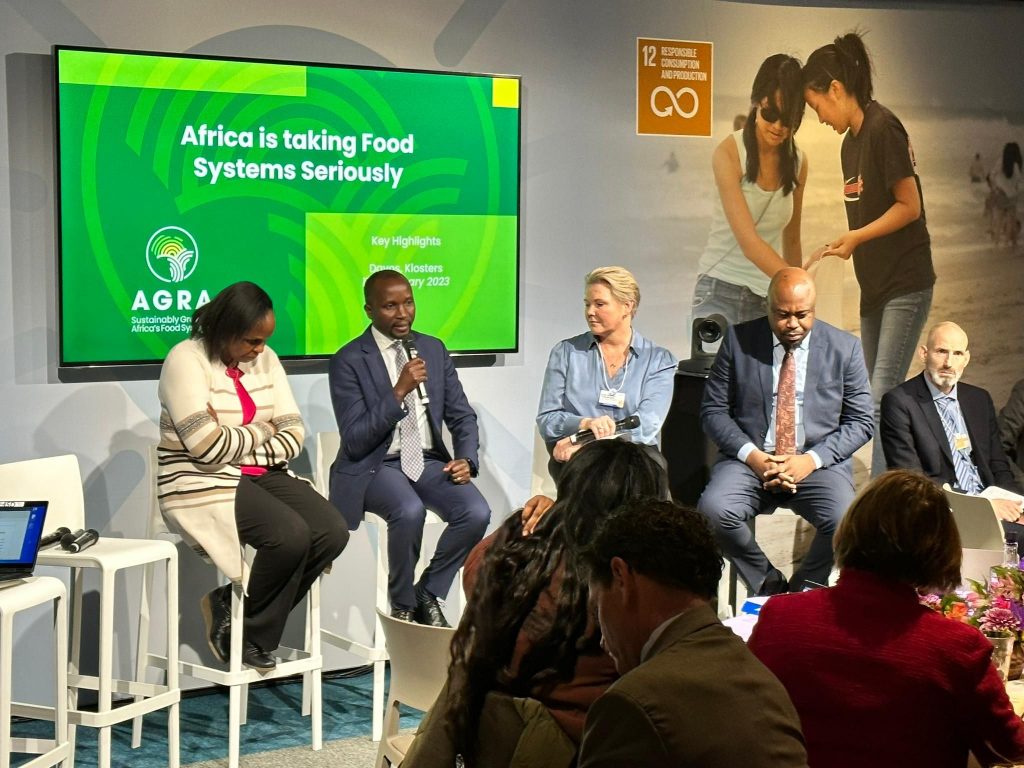Jim Giles- greenbiz.com

Regenerative agriculture could convert farms from carbon sources to carbon sinks, and the buzz around the idea is intense. Major companies, including General Mills and Ben and Jerry’s, are expressing interest and making commitments. A recent session on the topic at Expo West, the huge natural products trade show, was filled to overflowing. But some insiders also see trouble ahead. There is no agreed way to certify regenerative products, and as multiple initiatives rush to fill that gap there is a risk of diluting effort and confusing consumers.
The need to change the way we farm is not in doubt. Fertilizer use and livestock grazing release nitrous dioxide and methane respectively, and the sector as a whole was responsible for 9 percent of U.S. greenhouse gas emissions in 2016. At the same time, the degradation of soils by industrial farming practices is one reason why the United Nations estimates that the productivity of 20 percent of the planet’s vegetated surface is declining.
Advocates of regenerative agriculture say that it does not have to be this way. Preventing overgrazing and encouraging the growth of cover crops that transfer carbon to the soil can, among other techniques, start to reverse the flow so that farms and ranches pull carbon from the atmosphere, restoring soil health and reducing greenhouse gas concentrations.
According to a recent report from the National Academy of Sciences, changes of this nature to farming practices could help U.S. agriculture draw down 250 million tons of carbon dioxide annually.
Some large food companies are already taking steps to make this happen. In March, for instance, General Mills announced plans to convert 1 million acres of farmland to regenerative agriculture practices by 2030. By working with farmers, suppliers and farm advisers, the company hopes to drive adoption of regenerative approaches at farms that produce key ingredients including oats, wheat, corn, dairy feed and sugar beets. “Our first on-farm training and education academies will focus on North American growers where we source high-quality oats for Cheerios, Annie’s, Cascadian Farm, Nature Valley and Blue Buffalo,” said Jon Nudi, president of North America Retail for General Mills.
One stumbling block for entrants is the lack of a clear definition of what constitutes regenerative agriculture. “A lot of people are using the word ‘regenerative,'” said Diana Martin, director of communications at the Rodale Institute, an organic research organization based in Kutztown, Pennsylvania. “It’s the new buzzword. There is a danger of it getting greenwashed.”
Food companies large and small are already working together to address this problem. The Carbon Underground, a soil health organization based in Los Angeles, has created a broad definition of regenerative, based around the idea of drawing down carbon and restoring soil biodiversity, that has been signed by Ben and Jerry’s, DanoneWave, Numi Organic Tea and others.
With regenerative agriculture still in its infancy, it’s unclear how the changes would affect costs to farmers and consumers. But if the practice does increase costs, “a lot of people will pay extra for an apple that reverses climate change,” said Larry Kopald, founder and president of Carbon Underground. For that to happen, soil health advocates have to build upon the definition to create a regenerative certification, just as organic farms are certified by the U.S. Department of Agriculture. Yet as certification solutions begin to emerge, things are getting complicated.
One approach is to extend the existing organic certification. The Regenerative Organic Alliance, a group of farmers and companies chaired by the Rodale Institute, is piloting one such certification on more than 20 farms in nine countries. The standard requires farmers and ranchers to adopt processes that boost soil health, including the use of cover crops and crop rotation. Farmers also commit to standards relating to animal welfare and the wellbeing of farm workers and communities. The rules should be finalized by the end of the summer and certified products likely will be on shelves next year, Martin said.
Another approach is to focus on outcomes rather than processes. This is the method being pursued by soil health advocates at the Carbon Underground and the Savory Institute. To qualify for their regenerative certifications, farmers will report markers of soil health, including soil carbon. Carbon Underground is getting feedback on its proposed protocol, but Savory’s system is already available to farmers. In October, the institute certified its first product: beef snacks manufactured by Austin, Texas-based EPIC Provisions.
The outcome and process-based approaches share a common goal but could lead to very different farming practices. For one thing, the outcome-based certifications do not require farmers to follow specific practices to restore soil health — what matters is achieving that goal. This means that farmers could use at least some amount of synthetic fertilizer, an input that would be prohibited by the Rodale scheme. Chemicals are not a long-term solution, said Kopald, but he can imagine farmers wanting to use a dusting of fertilizer as they transition to cultivating their land using regenerative measures. “We’re not purists,” he said.
The certification schemes also differ on the breadth of the definition of regenerative agriculture. The Regenerative Organic Certification (ROC) being developed by Rodale and its partners incorporates elements of fair trade standards relating to worker welfare, an issue that the outcome-based certifications are not designed to address. In addition, genetically modified organisms (GMOs) are allowed by the Carbon Underground, but not by the ROC.
If more than one certification scheme becomes prominent, there’s a risk of confusing consumers. A trip to the grocery store already involves deciding between an array of labels of varying substance: humanely raised poultry; cage-free eggs; grass-fed beef; and, of course, organic fruit and vegetables. It’s not clear that consumers have the mental space for another certification scheme, let alone two or more schemes that promise similar benefits. “I do see room for confusion,” Kopald said.
Despite the different approaches, regenerative advocates who spoke to GreenBiz emphasized their common cause and said that they did not want to compete. The teams behind the schemes are in contact, and in one plausible scenario, the different schemes might run in parallel initially but combine with each other as the benefits to farmers and attraction to consumers of each approach become clearer. “We should be working collaboratively,” said David Rizzo, chief operating officer at Savory Institute’s Land to Market Program. “We don’t want to dilute by having multiple schemes.”



